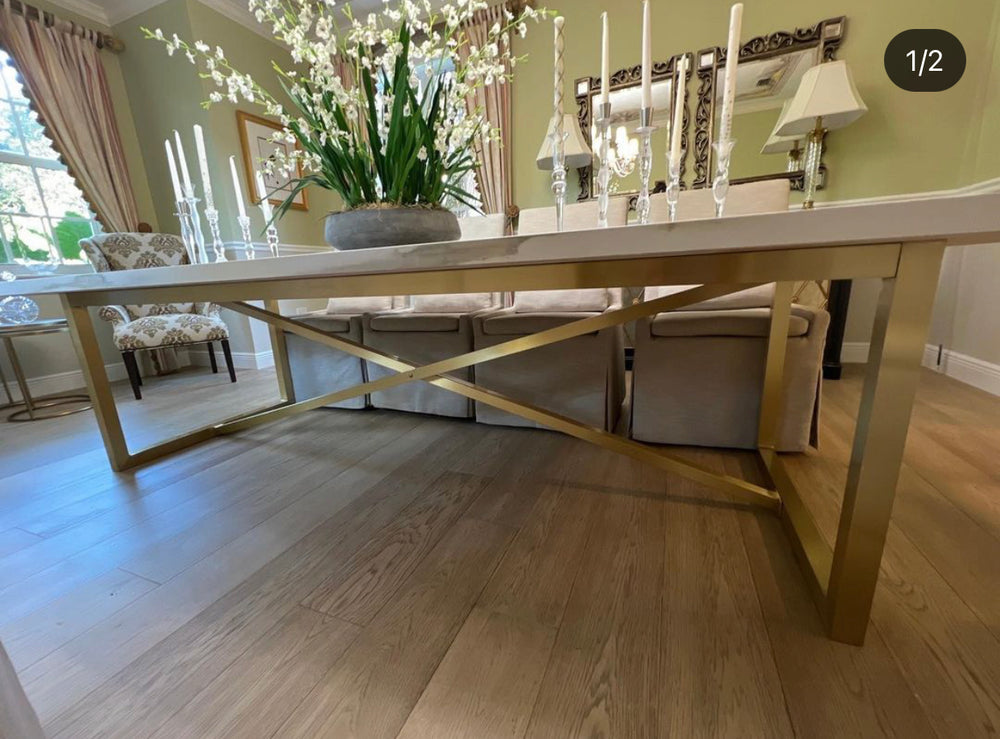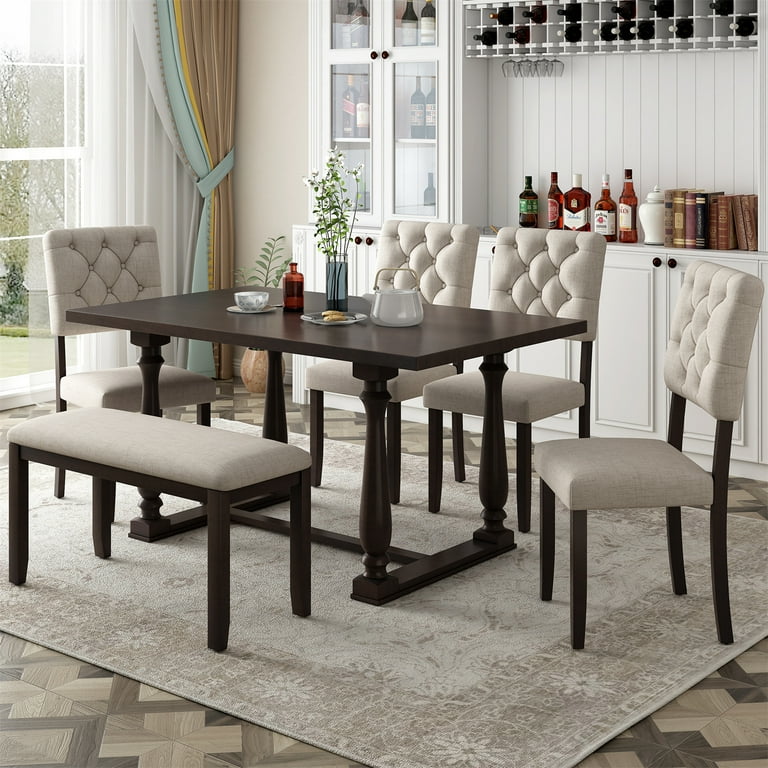Why Custom Dining Room Table Legs Are Worth the Investment
Wiki Article
From Conventional to Modern: Find the Suitable Dining-room Table Legs for Your Style
The selection of dining-room table legs plays a critical function in specifying the total personality of your space, bridging the space between traditional craftsmanship and modern visual appeals. While timeless styles such as cabriole and transformed legs stimulate a sense of timeless sophistication, modern styles like hairpin and geometric choices provide a chance for striking aesthetic passion. Evaluating the ideal equilibrium between these styles calls for a nuanced understanding of your existing decoration and individual taste. As you consider these aspects, the concern stays: how can you flawlessly integrate these varied leg designs to create an unified eating experience?Comprehending Table Leg Styles
The selection of dining area table leg designs can dramatically affect both the aesthetics and functionality of the space. Each leg design contributes unique functional features and visual aspects, providing to varied design preferences and use demands. Understanding these designs is essential for picking the ideal table that lines up with your total interior decoration vision.As an example, tapered legs use a clean, classic appearance that can boost an area's elegance, while pedestal bases offer security and make the most of legroom, making them perfect for smaller sized rooms. Hairpin legs, a hallmark of mid-century modern-day design, present a commercial flair, permitting a ventilated, open feeling. Trestle legs stimulate rustic beauty, giving robust support and a sense of eternity.
Wooden legs can bring heat and structure, whereas metal options commonly convey a smooth, contemporary vibe. Ultimately, understanding table leg designs is essential for producing a natural dining location that mirrors personal design while guaranteeing functionality and comfort.
Standard Table Leg Options
When choosing dining-room table legs, standard alternatives frequently symbolize ageless elegance and craftsmanship. These layouts show an abundant heritage and a dedication to quality, making them suitable for those who appreciate classic aesthetic appeals.One of one of the most renowned conventional leg designs is the cabriole leg, identified by its elegant curved shape. This design frequently includes ornamental carvings and is most commonly discovered in Queen Anne and Chippendale furnishings. One more prominent choice is the turned leg, which boasts a collection of smooth, rounded shapes that provide a traditional look while keeping stability.
Moreover, the straight leg, while easy, uses a strong and basic structure that can mix effortlessly with a variety of tabletop styles. For those drawn to ornate outlining, claw-and-ball feet legs stimulate a sense of grandeur and can work as a sensational focal point in any kind of dining space.
Lastly, pedestal bases, although not purely legs, offer a different standard alternative that permits ample legroom and can be perfectly sculpted. Each of these standard leg styles adds to the overall atmosphere of a dining-room, marrying feature with aesthetic allure.

Modern Table Leg Layouts
Modern table leg styles offer a varied series of designs that click for source emphasize innovative products and tidy lines. These styles often prioritize capability while serving as striking prime focus within a dining area. Minimal looks are prevalent, with legs crafted from products such as steel, glass, and crafted wood, which add to a ventilated and contemporary feel.One prominent layout is the hairpin leg, defined by its slim, conical structure that supplies security without overwhelming the tabletop (dining room table legs). This design is often discovered in mid-century modern-day furnishings and can effortlessly match different eating table shapes. Another pattern is making use of geometric forms, where legs may take on angular or unbalanced kinds, adding visual interest and a touch of creativity

Mixing Styles for Distinct Spaces
Usually, property owners look for to create distinct dining spaces that reflect their personal style by blending various layout components. This technique permits the unification of varied looks, leading to a harmonious yet distinctive setting. Pairing a rustic wood table with sleek, modern-day steel legs can create a distinctive comparison that elevates the space's general appeal.In addition, integrating vintage table legs with contemporary table internet tops can evoke a feeling of history while preserving a contemporary perceptiveness. Such combinations not just showcase private taste however also urge creativity, permitting property owners to curate a room that feels both individual and inviting.
Color plays an essential duty in this blending procedure; selecting table legs that enhance or contrast with the existing shade system can boost visual interest. As an example, whitewashed legs can soften the boldness of a dark table surface, developing a well balanced aesthetic.
Tips for Selecting the Right Legs
Picking the right table legs is vital for attaining both functionality and aesthetic allure in your dining space. Begin by taking into consideration the overall style of your space. Typical settings gain from legs that feature intricate carvings or transformed layouts, while contemporary areas might ask for streamlined, minimalist styles.Next, examine the elevation and security of the legs. dining room table legs. Basic table vary in between 28 to 30 inches in elevation, so make certain the legs complement this measurement for comfort. Furthermore, robust materials, such as hardwood or steel, can improve security and long life
Review the leg form too-- options include straight, tapered, or pedestal designs. Straight legs offer a classic look, while tapered legs can add a touch of beauty. Pedestal bases offer sufficient legroom and are suitable for smaller sized areas.
Final Thought
In recap, choosing the perfect eating space table legs requires mindful factor to consider of both conventional and modern styles. By integrating leg style, elevation, and material with the overall decor, a cohesive and welcoming environment can be achieved.The selection of dining area table leg styles can dramatically influence both the aesthetic appeals and functionality of the area. Ultimately, comprehending table leg styles is necessary for creating a natural dining location that mirrors personal design while guaranteeing usefulness and comfort.One of the most famous conventional leg designs is the cabriole leg, defined by its elegant curved shape. Straight legs supply a classic appearance, while conical legs can add a touch of sophistication.In summary, choosing the More Bonuses excellent dining space table legs calls for careful consideration of both typical and modern designs.
Report this wiki page